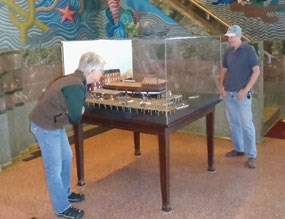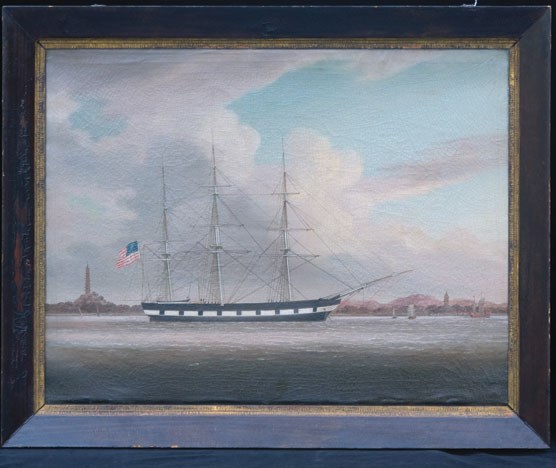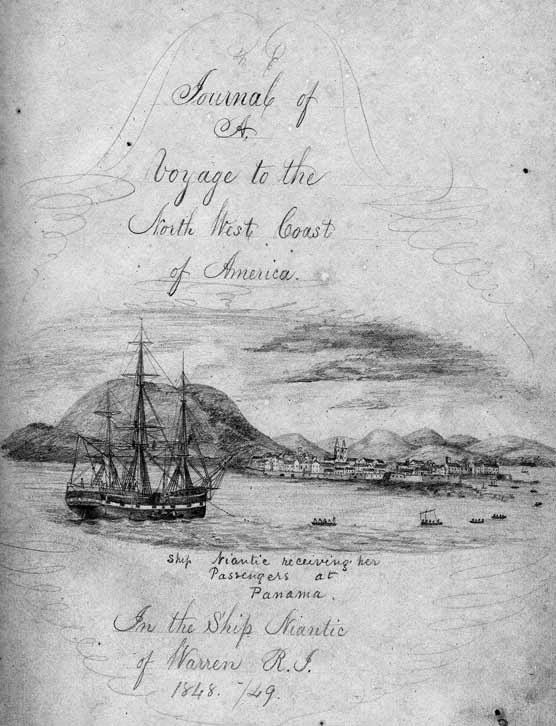
NPS By David Hull, Principal Librarian After carrying 248 gold-seekers from Panama to San Francisco Bay, the Niantic was beached in the summer of 1849 at the corner of Clay and Sansome Streets. She then served as a storeship earning her owners $20,000 per month until she was reduced to a great, flat tray in the mud when she was burned to the turn of her bilge in the great San Francisco Fire of May 1851. The Niantic was the furthest inland of the 44 ships known to be buried in downtown San Francisco. More than any others, she was described by contemporaries, drawn and captured in lithography. On another coast, in another century: the street address on Martha’s Vineyard, off Cape Cod, had no number. It was simply a sign: “Cleaveland House, c. 1750.” In this house, in 1980, I was privileged to receive for the maritime museum a splendid gift from Dionis Coffin Riggs, a descendant of Henry Cleaveland, who was captain of the Niantic in 1849 on a whaling voyage in the Pacific. When he learned of hundreds of would-be passengers at Panama, he sailed there and seized the opportunity. Dionis’ gift was Captain Cleaveland’s logbook for that voyage, a marvelous account prefaced by a fine drawing by his son (and first mate) of the Niantic receiving her passengers at Panama. Thirty years later, Dionis’ daughter, Cynthia Riggs, contacted the Park’s Library. She was opening her ancestral home to others as a Bed and Breakfast and had decided to do something about an old painting that had hung on the wall for about 150 years. A skilled conservator brought the faded and torn painting back into the light of a new day. It was the Niantic, in port at Ningpo, China about 1838. Before she was a whaler, she carried the teas and silks of China, having been built in 1835 for the China Trade. In May 2010, I was again privileged to receive for the park’s maritime museum a second splendid gift from a descendent of Captain Henry Cleaveland. While the logbook positions the Niantic for fame, the painting illustrates the ship in her glory. On exhibit this fall in the museum building at the foot of Polk Street will be the painting, together with a detailed diorama of the ship on the Gold Rush waterfront of 1849, and her actual stern and rudder — which this museum recovered in 1978 when, as the San Francisco Chronicle newspaper put it, “A Gold Rush Ship Is Dug Up Downtown.” 
NPS, SAFR 22386 
NPS SAFR 13574 HDC 28 |
Last updated: March 1, 2015
